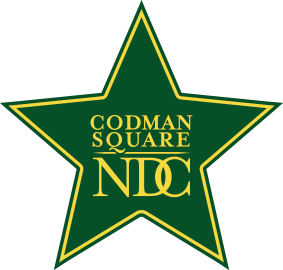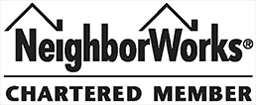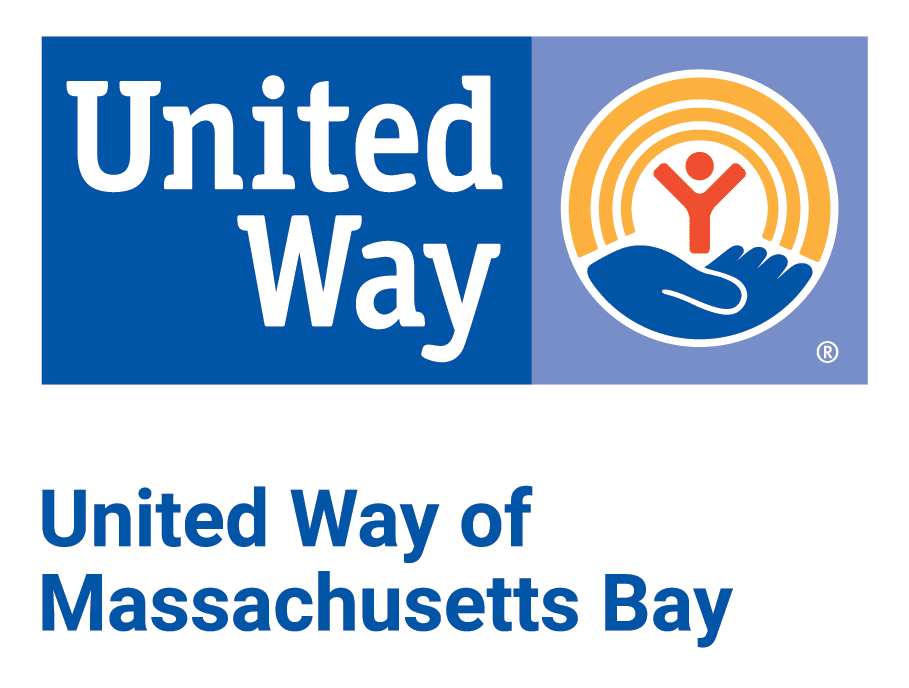Our History
In 2021, Codman Square Neighborhood Development Corporation (CSNDC) celebrates its 40th year serving Codman Square and South Dorchester.
This page summarizes the major events and initiatives that have shaped our long and impactful history. You can also read reflections from some of the founders of the organization HERE.
1970s – 1980s
The Codman Square neighborhood experienced arsons for profit, block busting and white flight.
Community leaders, including Arthur Young, Cynthia Younger, Jim Keefe (Trinity Financial) and others, fight back by spearheading the creation of WE CAN. This group renovated blighted 1-4 family properties and sold them to low and moderate-income first time home buyers.
Jim Keefe supported the creation of a supermarket coop on Washington Street in the mid to late 1970s. Jim also played a key role in development of the 100-unit Champlain Circle affordable homeownership project.
On September 18, 1981, Codman Square Housing Development Corporation (CSHDC) is incorporated as a 501c3 nonprofit agency.
1985-1990
CSHDC completed its first big rental housing developments. About 120 units of housing developed, including 80 units of distressed, scattered site housing via the Boston Housing Partnership 1 (BHP1).
A group of Codman Square organizations, including Codman Square Housing Development Corp, Codman Square Health Center, and the Codman Square Neighborhood Council developed The Action Agenda, outlining 100 community-generated recommendations for action on community issues for the next five to ten years.
Renovation of the 25,000 sq. ft. Lithgow Commercial Building and block took place in 1990, bringing major commercial activity into the heart of Codman Square, along with 31 new units of affordable housing at Lithgow Residential.
1991-1994

In 1993, Alyce Lee, 2nd Executive Director of CSHDC, and the Board of Directors facilitated the changing of the agency’s name to the Codman Square Neighborhood Development Corporation (CSNDC) in recognition that community development encompassed more than bricks and mortar.
325 units at Washington Columbia 1 and 2 were renovated through BHP2. Successful resident organizing alleviated major drug issues at these properties and received national attention.
1995-2005
CSNDC placed greater emphasis on real estate development. From 1995-2011, about 500 more affordable housing units were added, including about 50 more homeownership units.
Gail Latimore hired as 4th Executive Director in 1998 (following Jim Ferris).
Gail Latimore launched the Millennium Planning process in 1999—the second ‘ground-up’ community vision plan with input from hundreds of community residents. The focus was on what should happen in Codman Square’s service area from 2000-2010.
2005-2012
From 2005 through 2007, crime, foreclosures and wide-scale unemployment issues started to rise and the Great Recession hit. Dorchester experienced the highest level of foreclosures of any Boston neighborhood. CSNDC responded by convening the Millennium Ten Initiative to look anew at community planning and action.
CSNDC supported Talbot Norfolk Triangle Neighbors United (TNT-NU) in advocating for the Mayor to place the Elmhurst vacant lot into the City’s capital budget. Elmhurst Playground was completed in 2009.
The Fairmount/Indigo Community Development Corporation Collaborative was formed in 2005 and joined forces with other community-based organizations to push for release of the $200 million in State funding for Fairmount/Indigo rail line improvements that the Four Corners Action Coalition had won in 2002.
Three of four new stops on the Fairmount line were built and two existing inner-City stops substantially renovated, achieving transit equity. Fares were permanently lowered and weekend service commenced.
2012-2016
With CSNDC as key spearhead, Millennium Ten (M10) Plan (3rd community planning initiative) was completed by 1,000 community stakeholders. Seven key action projects were launched, including Anti-Displacement, Men of Color/Men of Action, Community Café, Financial Opportunity Network, Eco-Innovation District, the Business Cooperative, and the Youth Jobs Hub.
CSNDC, with Local Initiative Support Corporation’s, was awarded a 3-year national Prevention Institute grant to focus on health, including mental, physical and economic health, of men of color.
In 2013, CSNDC launched the Talbot-Norfolk-Triangle Eco-Innovation District (EID), part of Eco-Districts Clinton Global Initiatives’ Target Cities Program and focused on local energy generation, green infrastructure, and transit-oriented development.
2016-2020
Four real estate development projects totaling 231 units of affordable housing were launched. One of these is the 16-unit New England Heritage Homes homeownership development, Whittier Lyndhurst Washington, which was won from bankruptcy court in a resident-led, public-private partnership that included Boston’s Inspectional Services Dept, Greater Boston Legal Services, and a range of pro-bono law firms, with CSNDC and City Life Vida Urbana.
A fourth stop on the Fairmount Indigo Commuter rail line was installed in Mattapan. MBTA piloted a Charlie card program and free transfers to Red Line and buses from the stop, lowering the costs for riders.
CSNDC launched the Green Infrastructure Certification Training Program, focused on preparing low to moderate-income people (particularly men of color) for jobs in the thousands of public capital projects that were required by the EPA to be at a higher level of environmental sustainability.
In the wake of the killing of George Floyd and the disproportionate impact of the COVID-19 pandemic on Black and Brown people, and pursuant to CSNDC’s Board and staff engagement in the NeighborWorks America’s two-year Race, Equity, Diversity and Inclusion (REDI) training, CSNDC prepares to launch an Anti-Racism Academy focused on engaging constituents (Equity Army) in information, education, leadership and platform development, and advocacy/action to effect system change around issues such as police brutality, negative health and life mortality issues.




